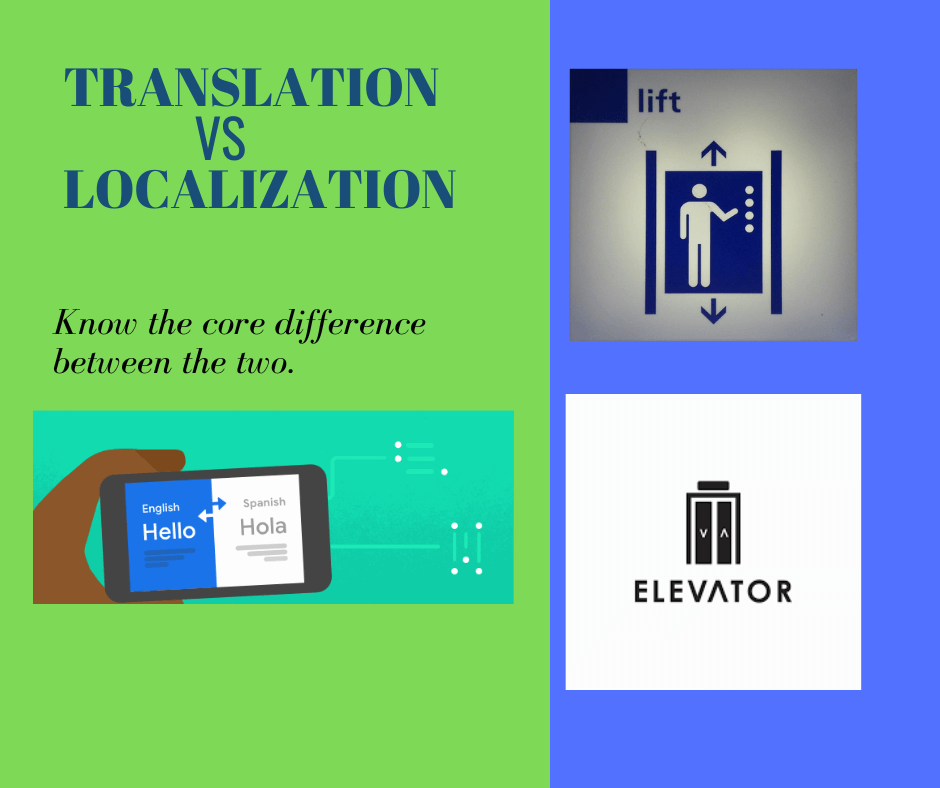Did you know the language service market is predicted to reach US$96.21 billion by the end of 2032. Language is the most important vehicle for human evolution. We connect and understand this world with the help of communication. We can visualize things that we have never seen before through language only. Now the main problem with language is it changes from region to region.
In India it is said the ascent changes every 200km and language changes every 400km. So we have two wonderful methods to communicate between different languages that are translation and localization. If we see a difference between translation and localization: Translation is more focused on the conversion of text from one language to another in a minimum time frame and more efficiently.
Localization focuses more on converting from one language to another by considering the most effective method. Localization is to improve product sales, launch new products, and improve the efficiency of service.
The translation is for more official work like converting medical procedures, converting machine manuals, and word-to-word conversion of books. It includes machine translation and professional translations.

What is Translation?
During the translation process, details of the product or contents are significant. Translation plays a crucial role in our day-to-day lives that we never realize. Only 25% of the global population are fluent in English. To reach wider audience everyone needs to utilise translation.
Need for translation
1) Significance of translation for everyone
The translation is essential for everyone, as most businesses, industries, and companies operate in English. When everyone understands the necessity to reach a wider audience, they will understand the need for translation. For many industries and businesses, professional translators are available globally, through whom they provide translation services. English is spoken everywhere, but people talk primarily in their native language or mother tongue to express their thoughts and ideas clearly. Thus translation becomes a necessity.
2) To participate in the global economy
Because industries and businesses are spread all across the globe, there is no geographical barrier; the only obstacle is language, so a higher level of translation is required to meet the increasing demand and reach the target audience and target market.
3) To allow the spread of ideas and information
For easy and effective communication between different countries and cultural references, for the exchange of ideas, knowledge, information, and thoughts, translation is essential to deal with every situation as it converts text from one language to another by considering the target language. For example, the Bhagvadgeeta, the Bible, and the Quran have been translated into numerous languages.
4) Reach out to a global audience
The translation is essential to reaching out to a larger audience and sharing our ideas, technologies, goals, brands, and specific markets to a greater extent than we ever imagined before. It will bring new means of communication.
5) Educational or professional importance
Studying abroad or working in other countries to avoid errors in work for smooth and error-free business can be done with the help of translation.
6) To go exploring or on vacation
Because many maps, documents, and brochures are available in the local language, travel companies can use translation to fully fulfill the demands of travelers, which can also help to grow the tourism industry.
Translation Process
As we all know, translation is a demanding task, so a few procedures must be followed to perform it well with a clear mind and fewer errors:
There are three fundamental steps:
1) Choosing format of translation
The first step is to decide or differentiate whether it is a literary, professional, scientific, administrative, or technical text. Use keywords or terminology accordingly.
2) Preliminary steps
After finalising format, glossary preparation, copies preparation and translation.
3) Check the translation’s accuracy
After drafting the translation. Editing and proofreading were done to ensure accuracy of translation.
What is Localization?
Localization is the act or process of making a product suitable for use in a particular country or region. Localization is the process of conveying your idea or thoughts onto large masses by comprehending the difference. Localization is not about converting word-to-word meaning but grasping the local demand and molding your website or app into it.
Understanding the distinction is like impregnating your idea or thoughts onto large masses. Localization is nothing but targeting your audience by understanding their thoughts. They should feel familiar with the content, product, or services related to their cultural emotions. Read our blog to understand better the process of localization and how localization works.
It includes a few of the contents or aspects mentioned below:
1) Language
Translation is an important part of localization. As opposed to translating text or the original language into the target language. Word choice, sentence framing has to be as per target user usage.
2) Date and time format
Day and night change according to regions or latitudes, so date formats and time formats according to location. For example, Indians use day/month/year format whereas the US use month/day/year, kg is used in some countries for metric systems whereas some use pounds.
3) Images, Colors, and Logos
Every country has its flag; it changes from country to country. Many religious symbols are associated with specific colors. So it changes with localization. Usage of images and choice of colours varies from region to region. To provide target users native feel one must adapt to their choices.
4) Currency
The currency of every country is different, while localising content we need to adapt text as per regional users currency.
Need for Localization
Localization makes content more attractive so that an audience can buy it. Most people prefer to purchase products or services which are available in their native language. Localization is the best tool to reach a global audience. Localization is implemented in Training manuals, TV, Product information, Advisory guidelines, Legal documents, and User Guidelines.
In localization, a personal level connection is established with customers. Because localization understands cultural references, market information, and customers’ requirements, The main aim of localization is to focus on the market. Localization is crucial in connecting with customers globally. Few companies are more successful because they know how to balance global standards with local compliance.
If we take a case study of McDonald’s, we will realize they are the best example of localization because of how they changed their food items. Based on local needs or cultural references, and expand their business globally.
The process of localization included the following points:
- Set your target. Determine the steps to follow and accept the process.
- Evaluate the available tools and make the schedule depending on the analysis.
- By creating a cultural, linguistic, and Scientific analysis. Check the software or codes for localization.
- By extracting original content and translating it by considering cultural aspects.
- Check out all the work estimates and analyze them end to end.
- Localize the graphics as per regional needs.
Translation vs. Localization: 7 Key Differences
1) Translation is one of the most effective means of connecting , and localization is synonymous with globalization. As the virtual boundaries of the country or company expand, we feel a greater need for localization.
2) In translation, cultural aspects and regional dialects are not taken into consideration, while localization revolves around the cultural aspects and content of both the original content and the target region.
3) For translation, core competency in languages is required; for localization, soft skills and a grounding in market dynamics are required.
4) As we know, translation is the process of converting words from one language to another, but it may not include images in it. While localization is not about word-to-word conversion, it involves image conversion as well into a localized form on accounting for cultural differences.
5) Localization involves another technique called “structured arrangement” while showcasing the images, advertisements, or content, as every language or region has its type of writing style. For ex. We write English from left to right and Urdu from right to left.
6) Translation converts texts into another language by upholding their true meaning and concepts. Localization, on the other hand, entails readjusting or modifying content to account for cultural references specific to the target audience.
7) It is one of the aspects of localization like Colors are connected with cultural meaning, just as logos or icons of some regional communities are often referred as examples of localization.
8) Localization, on the other hand, involves some technical and scientific aspects that go beyond translation, like text length or direction. It includes different currencies according to region. And various Units of measure as well.
Which one should I choose between localization and translation?
You have a digital product or service ready to become truly global, like a video game. Translation and Localization both provide effective communication. Many professional industries know how to provide accurate or regional content to users of any linguistic background. Widely speaking away from Translation, Localization covers broad areas and is more effective as it connects directly to people’s heart.
People buy with emotion and justify later with logic. To reach users one must connect with them in their language. Not sure which one to choose among localization and translation? We at Naarg is glad to assist you in choosing the right format of localization and translation. Reach us at info@naargmedia.com to know more about our services.





I love your post, and without fail, I faithfully apply each of its recommendations every time there’s a new one. Not only that, but I excitedly share it across all my social media platforms, and my audience always give a resounding giving it a thumbs up. Continue the outstanding work and informative posts coming!
Thank you Lyndel!